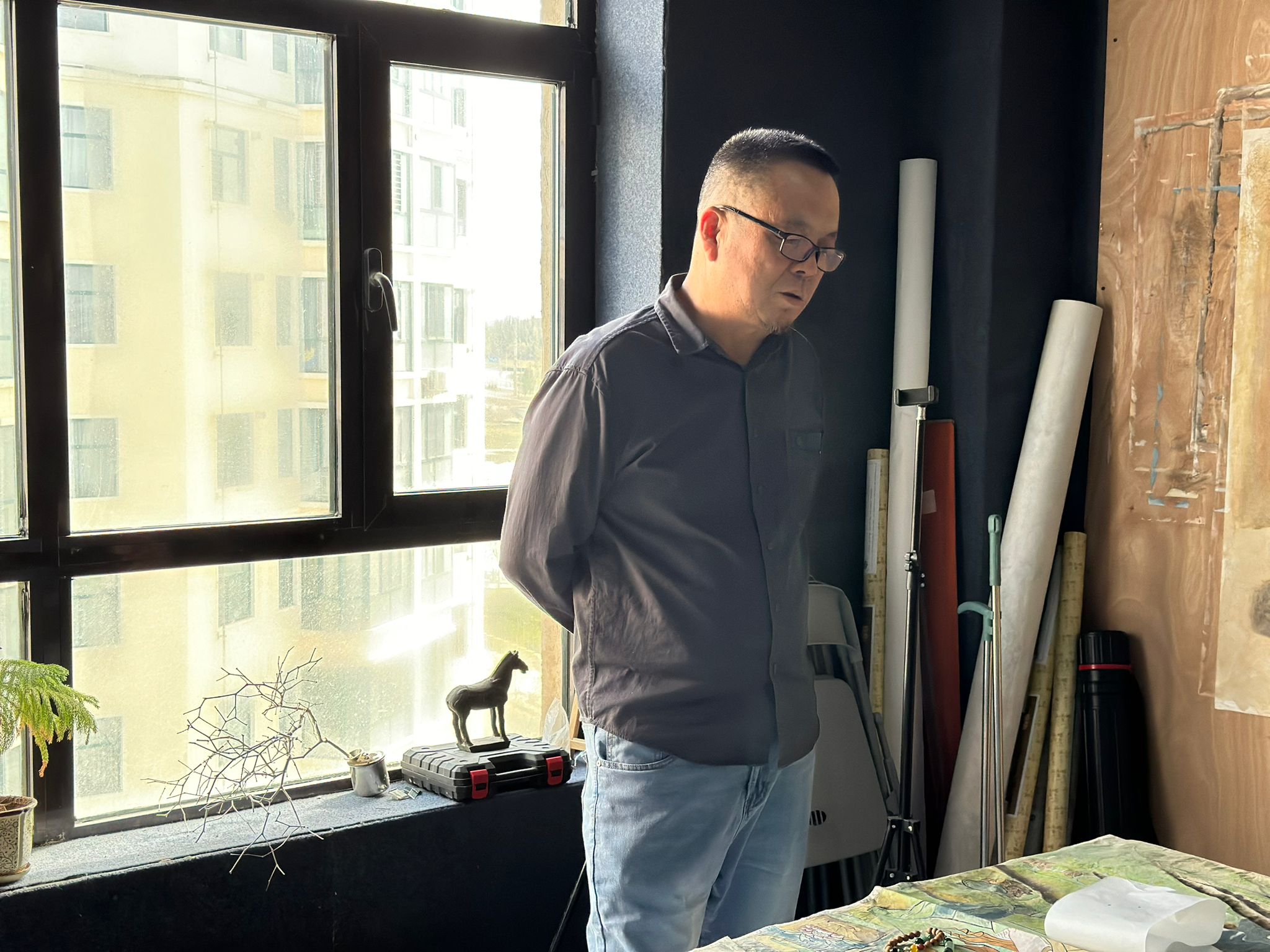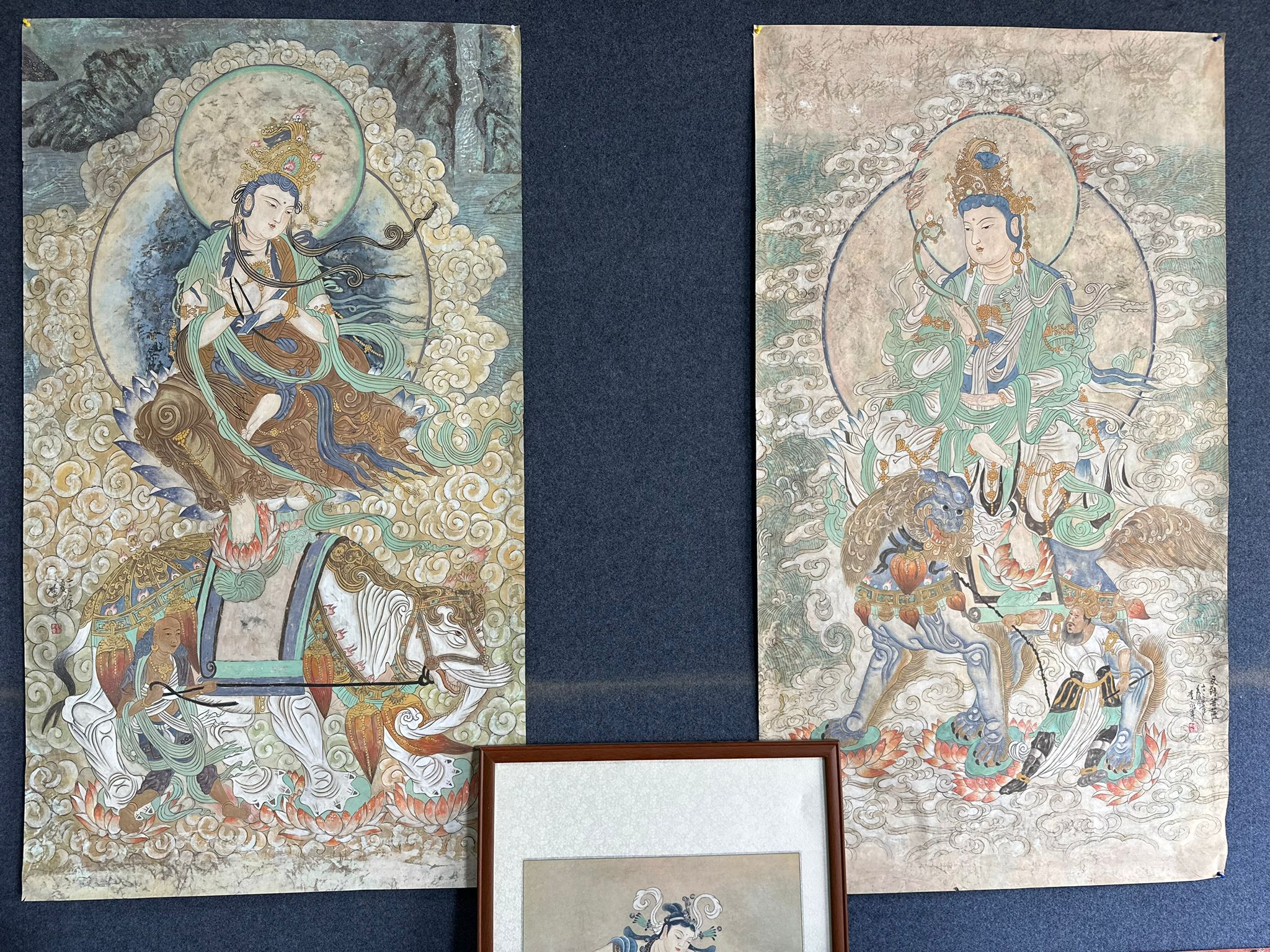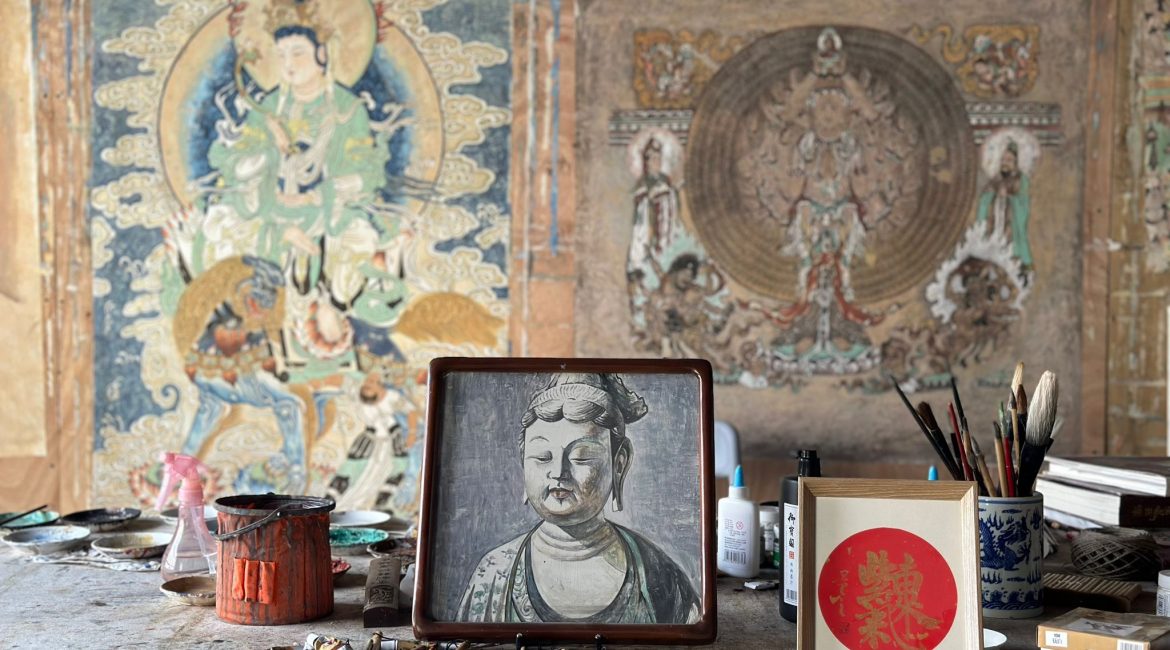This month, I had the pleasure of visiting a painter of Dunhuang art at his studio in his beloved hometown. Li Yong-jun has been in the business for decades and is a member of an artist collective devoted to Dunhuang art. He is the only contemporary artist here in Gansu who was recognized by the son of the seminal Zhang Daqin. His paintings, whether being faithful to the weathered reality of his subject matter, or being slightly touched up to look more restored, are always breathtaking and respectful representations of the original mural art.

This time, he had been helping a certain student to finish her work on a replica of the Water Moon Guan Yin at Yulin Grottoes. His studio is festooned with his artistic accomplishments: Samantabhadra and Manjushri at Yulin, a replica of a bodhisattva head at Mogao, and hanging paintings of a myriad of bodhisattvas and apsaras that make his atelier look like a mini-cave.
“Each client has different tastes,” he said, “and there’s no doubt some are as serious buyers of as faithful replicas, from the wear and tear of cracks to the sand erosion. But clients that want a painting to hang in their living room understandably want the painting’s subject to look a bit newer.”

Li is sought after for his balanced and naturalistic approach to painting. He is well-known for using the soil from the riverbed near the Mogao Grottoes to set as the base of the painting, between the canvas and any paint that comes afterward. “I can only get to this sediment after the banks burst in a flood,” he said, “but it is worth the special feeling that comes when your eyes fall upon my artwork and the colors do not look too ‘raw’ from mixing only with the canvas white. You need the hues to feel a certain way that resembles the age of the caves, even for paintings depicting a more restored state of the murals.”

Although he spends most of his time in his beloved Dunhuang, his friendship circles and love of good food and wine has meant that he leaves this town every winter, heading for more vibrant climes like Guangzhou and Shenzhen, as well as Shanghai. He also is interested in the maritime silk routes, recommending that I travel to Quanzhou sometime. “Fujian in particular is a Buddhist hub,” he says.
We managed to stumble on one of my favorite historical topics, the Tangut Empire, since Li’s student’s painting was of a Xixia mural. “The sad thing is that Guazhou does not have much left of Xixia. The ironic thing is that the Yulin Grottoes, which the Western Xia had a presence at, are better preserved because they were so far away from the Tangut power base.”

Despite the martial, mysterious nature of the Tanguts (they spent much of their history, from Li Yuanhao’s establishment of the “Great and Lofty White State” to its complete annihilation by Genghis Khan), the colors deployed by the master Tangut painters at Yulin are primarily celadon, cerulean, and other shades of blue and green: remarkably gentle, soothing to the soul, and representative of the calming, stilling waters of Nirvana. Perhaps that is why Li has his Samantabhadra and Manjushri in the heart of his atelier: they are among his proudest works.
It has been a lively reunion for both Li and Rebecca. As his student, she received from him a set of painting templates for future paintings. And hopefully, she will be presenting one of these completed templates to him next time at beautiful Dunhuang.


